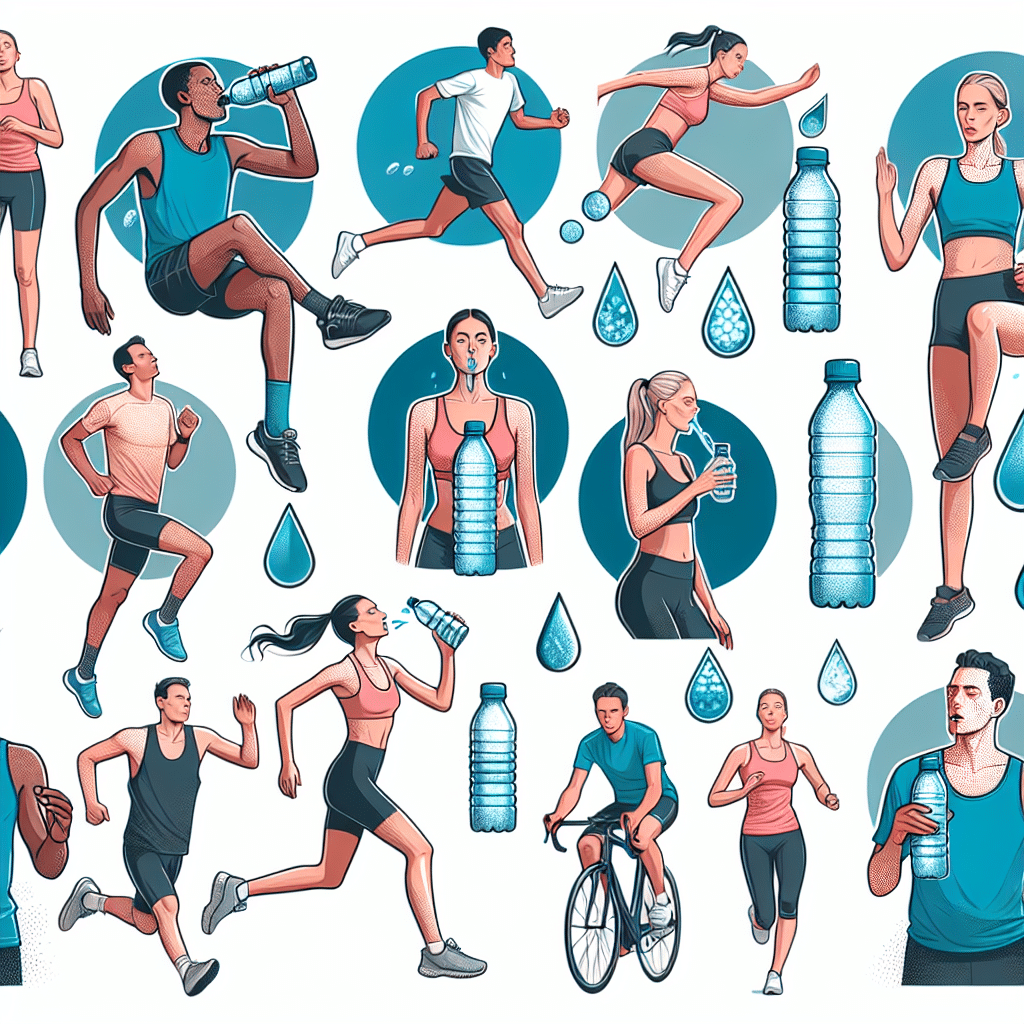Understanding Dehydration and Its Impact on Exercise
Dehydration occurs when the body loses more fluids than it takes in, significantly affecting performance during exercise. Even mild dehydration can lead to fatigue, reduced coordination, and a drop in physical endurance. Recognizing the signs of dehydration, including increased thirst, dry mouth, fatigue, dizziness, and decreased urine output, can help in taking preventive measures. Below are detailed tips to avoid dehydration while exercising.
Hydration Before Exercise
-
Pre-Workout Hydration Strategy: Hydrating before starting your workout is crucial. Aim to drink at least 17-20 ounces (500-600 ml) of water two to three hours before exercising. This provides your body with sufficient time to absorb the fluids.
-
Electrolyte Infusion: In situations where you anticipate high levels of sweat, consider incorporating an electrolyte-rich drink into your pre-workout routine. Electrolytes like sodium, potassium, and magnesium help with fluid retention and can prevent muscle cramps.
-
Monitor Urine Color: Use urine color as a hydration gauge. Pale yellow indicates good hydration, while dark yellow suggests dehydration. Checking the color of your urine before exercising can inform your hydration decision.
-
Scale Up Hydration for Endurance Events: If participating in endurance sports that last over an hour, increase your hydration efforts. Consider drinking 16-20 ounces of fluids an hour before exercising.
Hydration During Exercise
-
Regular Water Intake: During workouts, drink water consistently. Aim for about 7-10 ounces (200-300 ml) of water every 10-20 minutes during moderate activity.
-
Sports Drinks for Extended Sessions: For prolonged workouts longer than 60 minutes, consider consuming a sports drink that contains carbohydrates and electrolytes to replenish lost minerals and energy.
-
Temperature Management: Hot and humid weather can drastically increase fluid loss. In these conditions, increase your fluid intake. Opt for colder beverages, as they decrease core temperature more effectively.
-
Hydration-Friendly Workouts: Choose exercises and environments that reduce excessive sweating when possible. Activities like swimming are less dehydrating compared to running on a warm day.
Post-Workout Hydration
-
Rehydrate After Exercise: After completing your workout, replace lost fluids to aid recovery. Aim to drink at least 16-24 ounces (500-700 ml) of water for every pound lost during exercise, as indicated by post-workout weight measurement.
-
Creative Fluid Replacement: Consider consuming hydrating foods post-workout, such as watermelon, cucumbers, or oranges, which contribute to your overall fluid intake. Smoothies and protein shakes can also provide hydration benefits while replenishing nutrients.
Hydration Tips for Different Environments
-
Adapt to Altitude: If exercising at high altitudes, increase your fluid intake. Higher elevations can promote increased urination and faster breath, which exacerbates dehydration.
-
Cool Down Properly: Spend time cooling down post-exercise in a shaded or air-conditioned area. This not only helps with recovery but also minimizes additional fluid loss through sweat.
-
Use a Hydration Pack: For long-distance runners or cyclists, using a hydration pack can ensure continuous and convenient access to fluids.
Lifestyle and Nutrition Considerations
-
Daily Fluid Intake: Make hydration a part of your daily routine. Aim for at least 8 glasses (about 2 liters) of water daily, adjusting based on your activity level and climate.
-
Limit Caffeine and Alcohol: Both caffeine and alcohol can contribute to dehydration. If consuming these beverages, balance them with extra hydration efforts, particularly if they precede or follow your workout.
-
Balanced Diet: Integrate foods rich in water, such as lettuce, strawberries, and yogurt, into your diet to improve overall hydration levels.
Recognizing Individual Needs
-
Know Your Sweat Rate: Everyone has a different perspiration rate. Conduct a simple test: weigh yourself before and after a workout to determine how much fluid you lost, which can help tailor your hydration needs.
-
Adapt to Personal Factors: Age, weight, and fitness levels impact your hydration requirements. Adjust fluid intake based on any personal factors that may influence how much you sweat.
-
Listen to Your Body: Continuously monitor your thirst and fatigue levels during exercise. Your body often provides the best indication of its hydration needs.
Track Your Hydration
-
Use Hydration Apps: Various apps are available to track fluid intake effectively. These can help set reminders to drink water regularly throughout the day.
-
Visual Cues: Keep a water bottle visible during workouts, as visual reminders prompt more frequent drinking. Opt for bottles that indicate fluid levels for easy tracking.
Seasonal Adaptations
-
Adjust for Seasonal Activity: In hotter months, increase your hydration efforts, while in cooler months, be mindful of the humidity levels in the air, as they can still cause dehydration.
-
Plan for Workouts in Heat: If exercising during the hottest parts of the day, schedule workouts early in the morning or late in the evening when temperatures are cooler.
Final Strategies
-
Utilize Reminders: Set alarms or reminders on your phone to drink water at regular intervals during extended workouts or active days.
-
Flavored Water: If plain water feels unappealing, try infusing it with fruits, mint, or cucumber to enhance flavor without adding extra sugars or calories.
By implementing these strategies, you can significantly reduce the risk of dehydration during exercise, thereby enhancing your performance and overall health. Staying mindful of hydration needs can empower you to maintain stamina, focus, and wellness in your fitness journey.
